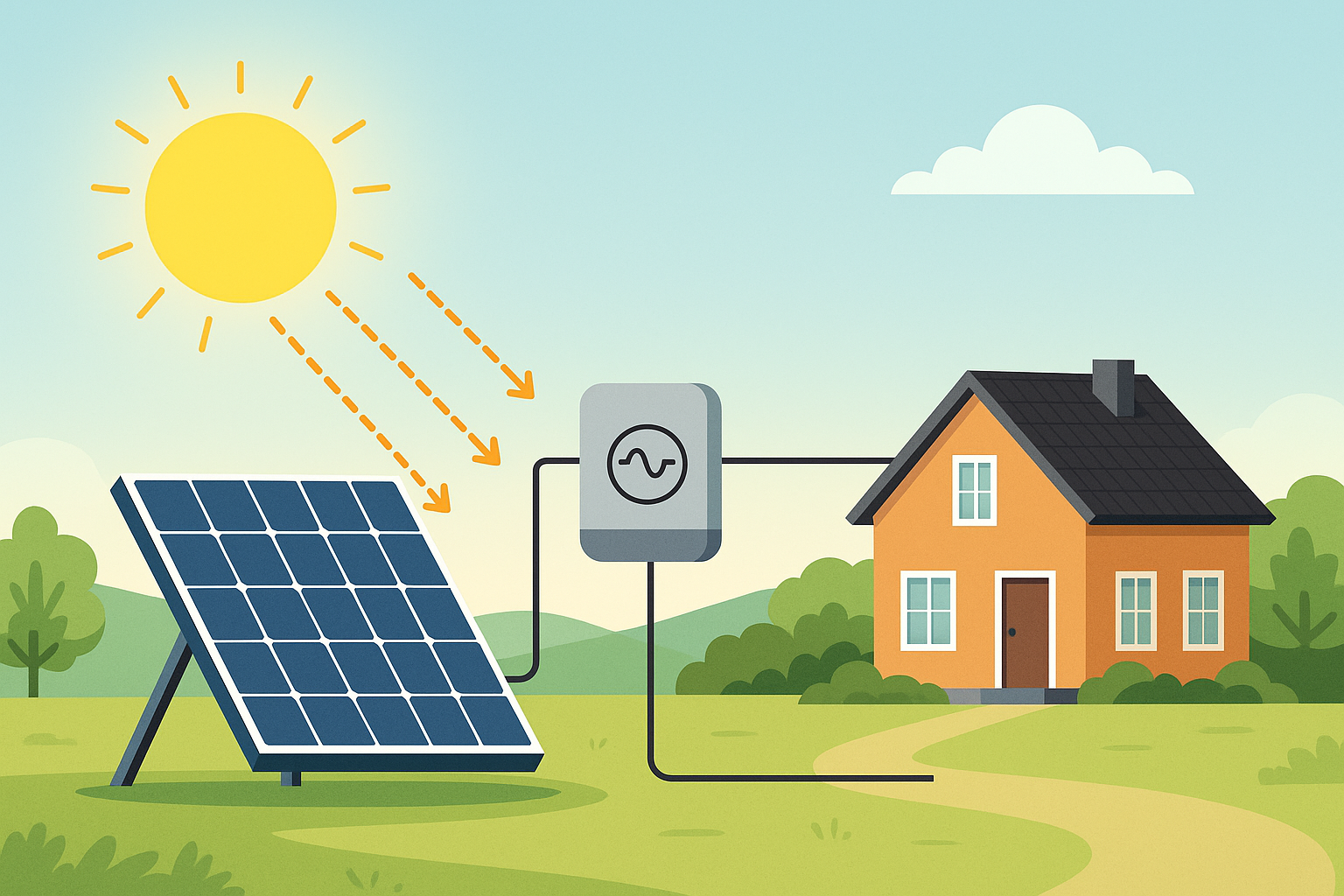Have you ever paused and looked at a solar panel and thought — how does this thing turn sunlight into electricity? It seems almost magical, doesn’t it? But the process behind this transformation is a beautiful blend of science, engineering, and nature. In this blog, we’ll break down how solar panels work in simple terms, explore the components involved, and understand why solar energy is becoming the future of power.
The Fundamentals: What Is Solar Energy?
Solar energy is the energy that we obtain directly from the sun. The sun radiates an enormous quantity of energy onto the earth every day — all the energy needed for the whole world for a whole year, if we only knew how to utilize it.".
The secret to harnessing this energy is in a tool known as the solar panel, composed of numerous tiny units referred to as solar cells.
How Solar Panels Turn Sunlight into Electricity?
The process is referred to as the Photovoltaic Effect — "photo" refers to light and "voltaic" is associated with electricity. Below is a step-by-step explanation of how it works:
Sunlight Hits the Solar Cell
Every solar panel consists of numerous photovoltaic (PV) cells, which are usually silicon. When light from the sun (photons) strikes the cells, it frees the electrons from their atoms.
Electric Field Creates a Flow of Electricity
The design of the solar cell establishes an electric field that drives these free electrons in one direction — this flow is an electric current.
Wires Capture This Current
Thin wires within the solar panel capture this stream of electrons and guide it through a circuit — which is now usable electricity.
From DC to AC: Making the Power Usable
Solar panels produce Direct Current (DC) electricity — this is electricity flowing in one direction. But the devices in our homes require Alternating Current (AC).
This is where an inverter becomes useful. It changes DC to AC so that the electricity may be utilized in powering your light, fans, fridge, and other appliances.
What Occurs in a Whole Solar Installation?
If you have solar power installed at home, your installation typically consists of:
Solar Panels – to harness sunlight
Inverter – to transform DC to AC
Battery (Optional) – to store unused energy for use at night
Solar Charge Controller – for voltage regulation and battery protection
Net Metering – in case connected to the grid, surplus power can be fed to electricity board to be credited
Does Solar Work on Cloudy Days
Yes, but less efficiently. Solar panels still generate electricity on rainy or cloudy days, just not as much as a sunny afternoon. That's why installation angle and location are important when installing solar lights or panels.
Solar Power Uses in Everyday Life
Solar power is not just for big buildings. Nowadays, it's used widely in: Solar garden lights and decorative lights, Solar streetlights, Solar security motion sensor lights, Solar water heaters, Solar power banks and phone chargers, Solar is all around you, even when you don't even realize it.
Why You Should Care About Solar Power?
It's Clean: No pollution or bad emissions.
It's Renewable: As long as the sun keeps on shining, you've got power.
It Saves Money: Huge savings on electricity bills in the long run.
It's Low Maintenance: Once they're installed, solar systems need very little maintenance.
It's Empowering: You get to control your own energy generation.
Real-Life Example: Hardoll Solar Lights
Hardoll, one of the most popular solar light brands in India, provides cutting-edge solutions such as solar decorative lights, motion sensor wall lights, solar pillar lights, and so on. These are ideal for houses, gardens, and walkways, enabling you to have bright, affordable lighting without spending extra on electricity.
Their products run solely on the power of sunlight — a wonderful demonstration of how solar power can help make everyday life smart and green.
Final Thought
The next time you experience the heat of the sun on your skin, imagine the amazing possibilities it contains. With the appropriate tools, such as solar panels and solar lighting, that warmth can be transformed into energy that powers your house, lowers your bills, and helps make our planet cleaner.
Sunlight is not only used to grow vegetables, and heat up the planet. It's also the future of electricity.


